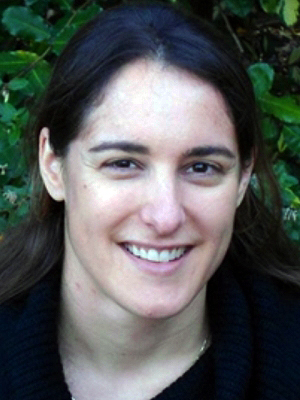How global warming affects astronomical observations
Astronomical observations from ground-based telescopes are sensitive to local atmospheric conditions. Anthropogenic climate change will negatively affect some of these conditions at observation sites around the globe, as a team of researchers led by the University of Bern and the National Centre of Competence in Research (NCCR) PlanetS reports.
The quality of ground-based astronomical observations delicately depends on the clarity of the atmosphere above the location from which they are made. Sites for telescopes are therefore very carefully selected. They are often high above sea level, so that less atmosphere stands between them and their targets. Many telescopes are also built in deserts, as clouds and even water vapour hinder a clear view of the night sky.
A team of researchers led by the University of Bern and the National Centre of Competence in Research (NCCR) PlanetS shows in a study, published in the journal Astronomy & Astrophysics and presented at the Europlanet Science Congress 2022 in Granada, how one of the major challenges of our time – anthropogenic climate change – now even affects our view of the cosmos.
A blind spot in the selection process
“Even though telescopes usually have a lifetime of several decades, site selection processes only consider the atmospheric conditions over a short timeframe. Usually over the past five years – too short to capture long-term trends, let alone future changes caused by global warming”, Caroline Haslebacher, lead author of the study and researcher at the NCCR PlanetS at the University of Bern, points out. The team of researchers from the University of Bern and the NCCR PlanetS, ETH Zurich, the European Southern Observatory (ESO) as well as the University of Reading in the UK therefore took it upon themselves to show the long-term perspective.
Worsening conditions around the globe
Their analysis of future climate trends, based on high resolution global climate models, shows that major astronomical observatories from Hawaii to the Canary Islands, Chile, Mexico, South Africa and Australia will likely experience an increase in temperature and atmospheric water content by 2050. This, in turn, could mean a loss in observing time as well as a loss of quality in the observations.
“Nowadays, astronomical observatories are designed to work under the current site conditions and only have a few possibilities for adaptation. Potential consequences of the climatic conditions for telescopes therefore include a higher risk of condensation due to an increased dew point or malfunctioning cooling systems, which can lead to more air turbulence in the telescope dome”, Haslebacher says.
The fact that the effects of climate change on observatories had not been taken into account before was not an oversight, as study co-author Marie-Estelle Demory says, but was not least due to the state of the art: "This is the first time that such a study has been possible. Thanks to the higher resolution of the global climate models developed through the Horizon 2020 PRIMAVERA project, we were able to examine the conditions at various locations of the globe with great fidelity - something that we were unable to do with conventional models. These models are valuable tools for the work we do at the Wyss Academy", says the senior scientist at the University of Bern and member of the Wyss Academy for Nature.
"This now allows us to say with certainty that anthropogenic climate change must be taken into account in the site selection for next-generation telescopes, and in the construction and maintenance of astronomical facilities," says Haslebacher.
Information about the publication:C. Haslebacher et al.: Impact of climate change on site characteristics of eight major astronomical observatories, Astronomy & Astrophysics |
Wyss Academy for NatureThe Wyss Academy for Nature at the University of Bern is a place of innovation, where research, business, policymakers and communities come together to co-design solutions for sustainable futures. The Wyss Academy’s mission is to turn scientific knowledge into action. Combining ambitious, innovative goals with a transformative approach, it was founded to develop innovative long-term pathways that strengthen and reconcile biodiversity conservation, human well-being and the sustainable use of natural resources in a variety of landscapes throughout the world. We co-design and implement concrete projects across a swathe of regions and countries. This global structure facilitates the replication of successes and learning. The Wyss Academy for Nature currently operates Hubs in Central Europe (Bern, Switzerland), Southeast Asia, East Africa and South America. |
Center for Space and Habitability (CSH)The mission of the Center for Space and Habitability (CSH) is to foster dialogue and interactions between the various scientific disciplines interested in the formation, detection and characterization of other worlds within and beyond the Solar System, the search for life elsewhere in the Universe, and its implications for disciplines outside of the sciences. The members, affiliates and collaborators include astronomers, astrophysicists and astrochemists, atmospheric, climate and planetary scientists, geologists and geophysicists, biochemists and philosophers. The CSH is home to the CSH and Bernoulli Fellowships, which host young, dynamic and talented researchers from all over the world to conduct independent research. It actively run a series of programs to stimulate interdisciplinary research within the University of Bern including collaborations and/or open dialogue with Medicine, Philosophy and Theology. |
Bernese space exploration: With the world’s elite since the first moon landingWhen the second man, "Buzz" Aldrin, stepped out of the lunar module on July 21, 1969, the first task he did was to set up the Bernese Solar Wind Composition experiment (SWC) also known as the “solar wind sail” by planting it in the ground of the moon, even before the American flag. This experiment, which was planned, built and the results analysed by Prof. Dr. Johannes Geiss and his team from the Physics Institute of the University of Bern, was the first great highlight in the history of Bernese space exploration. |
Europlanet Science Congress (EPSC)The Europlanet Science Congress (formerly the European Planetary Science Congress) is the annual meeting place of the Europlanet Society. With a track record of 16 years and regularly attracting around 1,000 participants, the Europlanet Science Congress is the largest planetary science meeting in Europe. It covers the entire range of planetary sciences with an extensive mix of talks, workshops and poster sessions while providing a unique space for networking and exchange of experiences. |
EuroplanetSince 2005, Europlanet has provided Europe’s planetary science community with a platform to exchange ideas and personnel, share research tools, data and facilities, define key science goals for the future, engage stakeholders, policy makers and European Citizens with planetary science. |
2022/09/22



